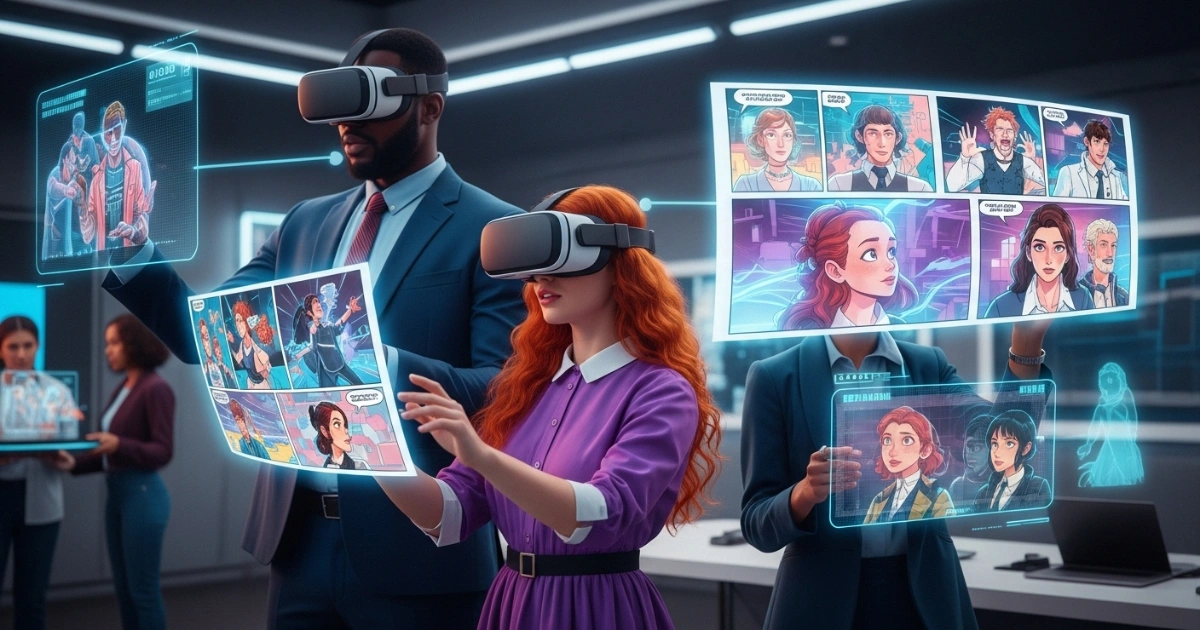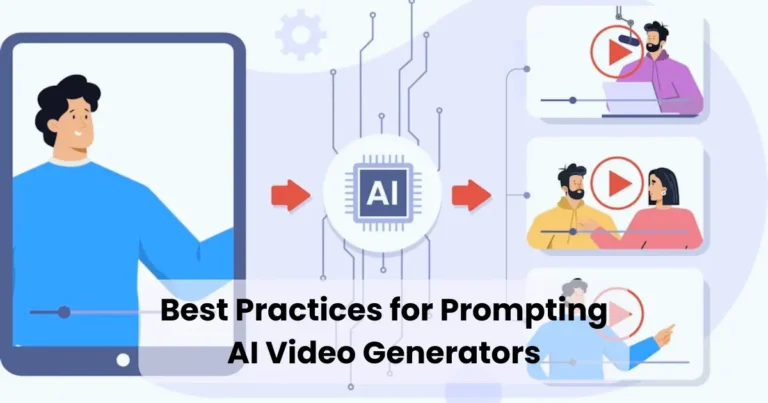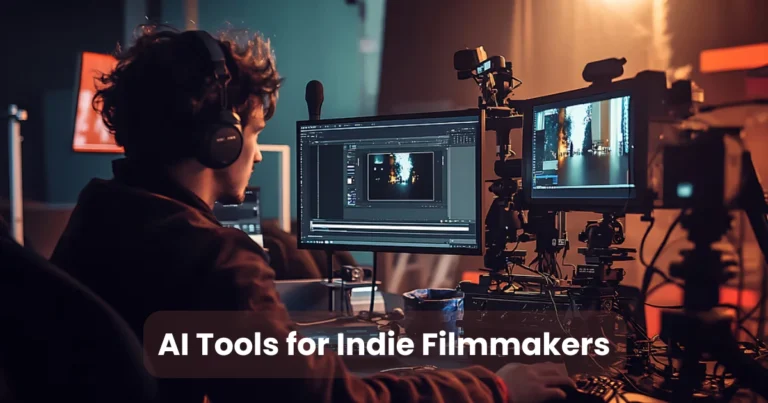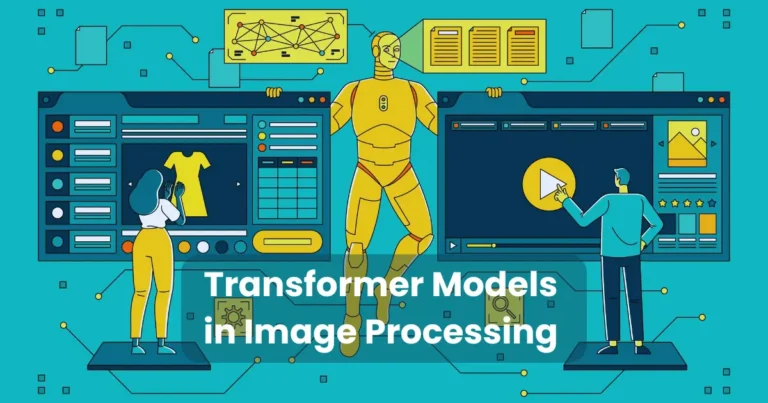Generating Motion Comics with AI: A Step-by-Step Guide

Contents
- 1 What Are Motion Comics?
- 2 Step-by-Step Guide to Generating Motion Comics with AI
- 3 Best Practices for Generating Motion Comics with AI
- 4 Challenges and Solutions in AI Motion Comic Creation
- 5 Top AI Tools for Motion Comics in 2025
- 6 Tips to Maximize Your Motion Comic’s Impact
- 7 The Future of AI in Motion Comics
Generating motion comics with AI has revolutionized the way creators bring their stories to life, blending the charm of traditional comics with dynamic animations. This innovative approach allows artists, writers, and hobbyists to craft engaging narratives without requiring advanced technical skills. By leveraging artificial intelligence, you can transform static images into captivating motion comics in no time. In this comprehensive guide, we’ll explore the process of creating motion comics using AI, covering essential tools, techniques, and tips to maximize your creative output. Whether you’re a seasoned creator or a beginner, this article will help you navigate the exciting world of AI-driven motion comics.
What Are Motion Comics?
Motion comics are a hybrid storytelling medium that combines elements of comic books and animation. Unlike traditional comics, which rely on static panels, motion comics incorporate subtle animations, sound effects, voiceovers, and transitions to enhance the narrative. These dynamic visuals make stories more immersive, engaging readers in ways that static images cannot. With AI, generating motion comics has become more accessible, enabling creators to produce professional-quality content efficiently.
Why Use AI for Motion Comics?
AI simplifies the creation process by automating complex tasks like animation, lip-syncing, and scene transitions. Here’s why AI is a game-changer for motion comic production:
- Speed: AI tools can generate animations in minutes, saving hours of manual work.
- Cost-Effectiveness: No need for expensive software or professional animators.
- Accessibility: User-friendly platforms allow beginners to create motion comics with ease.
- Customization: AI offers flexible options to tailor visuals, audio, and effects to your story.
By using AI, creators can focus on storytelling while the technology handles technical aspects, making it easier to produce high-quality motion comics.
Step-by-Step Guide to Generating Motion Comics with AI
Creating motion comics with AI involves a structured process. Below, we outline the key steps to help you get started.

Step 1: Plan Your Story and Script
Before diving into AI tools, develop a clear storyline and script. A well-crafted narrative is the backbone of any motion comic. Follow these tips:
- Outline the Plot: Define the beginning, middle, and end of your story.
- Create a Script: Write dialogue and descriptions for each panel or scene.
- Storyboard: Sketch rough panels to visualize the flow of your comic.
A strong script ensures your motion comic remains cohesive, even when enhanced with AI-generated animations.
Step 2: Choose the Right AI Tools
Selecting the appropriate AI tools is crucial for generating motion comics with AI. Several platforms cater to different aspects of motion comic creation, such as art generation, animation, and audio integration. Here are some popular options:
- Art Generation Tools:
- MidJourney: Creates high-quality comic-style artwork from text prompts.
- Stable Diffusion: Offers customizable art for panels and characters.
- DALL·E 3: Generates unique visuals for backgrounds and characters.
- Animation Tools:
- Runway ML: Animates static images with smooth transitions and effects.
- Kaiber: Specializes in motion effects for comic panels.
- Adobe Character Animator: Automates character movements and lip-syncing.
- Audio and Voiceover Tools:
- ElevenLabs: Produces realistic AI-generated voiceovers.
- Murf AI: Offers customizable voice options for narration.
Choose tools based on your budget, skill level, and project requirements. Many platforms offer free trials, so experiment to find the best fit.
Step 3: Create Comic Panels
Once you’ve selected your tools, start generating the visual elements of your motion comic. Use AI art generation tools to create panels, characters, and backgrounds. Here’s how:
- Input Text Prompts: Describe your desired art style, such as “vibrant manga-style characters” or “dark cyberpunk cityscape.”
- Refine Outputs: Adjust prompts to achieve consistent visuals across panels.
- Organize Panels: Arrange images in sequence to match your storyboard.
AI tools can generate hundreds of variations, so take time to select or refine images that align with your vision.
Step 4: Add Motion and Animations
This step is where generating motion comics with AI truly shines. Use animation tools to bring your panels to life. Follow these steps:
- Import Panels: Upload your static images to the animation platform.
- Apply Motion Effects: Add zooms, pans, or fades to create dynamic transitions.
- Animate Characters: Use tools like Adobe Character Animator to add lip-syncing or subtle movements like blinking or gesturing.
- Incorporate Effects: Include particle effects, weather animations, or lighting changes to enhance the mood.
Test animations to ensure they complement the story without overwhelming the viewer.
Step 5: Integrate Audio and Voiceovers
Audio elevates motion comics by adding depth and emotion. AI tools make it easy to integrate voiceovers and sound effects:
- Generate Voiceovers: Use ElevenLabs or Murf AI to create character voices or narration based on your script.
- Add Sound Effects: Incorporate background music or sound effects like footsteps, explosions, or ambient noise.
- Sync Audio with Animations: Ensure voiceovers align with character lip movements for a polished result.
Balance audio levels to avoid overpowering the visuals, creating a cohesive experience.
Step 6: Edit and Finalize
Once your visuals and audio are ready, compile everything into a final motion comic. Use video editing software like Adobe Premiere Pro or DaVinci Resolve to:
- Sequence Scenes: Arrange animated panels in the correct order.
- Add Transitions: Use fades, cuts, or wipes for smooth scene changes.
- Polish Details: Adjust timing, colors, or audio to enhance quality.
Preview the comic multiple times to catch errors and ensure a seamless flow.
After editing, export your motion comic in a shareable format, such as MP4 or WEBM. Consider these tips:
- Optimize for Platforms: Adjust resolution and file size for platforms like YouTube, Vimeo, or social media.
- Add Subtitles: Include captions for accessibility and broader reach.
- Promote Your Work: Share your motion comic on social media, blogs, or comic platforms to attract viewers.
By optimizing your export settings, you ensure your motion comic looks great across devices.
Best Practices for Generating Motion Comics with AI
To maximize the quality of your motion comics, follow these best practices:

- Maintain Consistency: Use consistent art styles and character designs across panels.
- Keep Animations Subtle: Avoid over-animating, as excessive motion can distract from the story.
- Test on Multiple Devices: Ensure your comic looks good on phones, tablets, and desktops.
- Engage Your Audience: Use compelling narratives and dynamic visuals to keep viewers hooked.
- Experiment with Tools: Combine multiple AI platforms to achieve unique effects.
These practices help you create professional-grade motion comics that resonate with audiences.
Challenges and Solutions in AI Motion Comic Creation
While generating motion comics with AI is exciting, it comes with challenges. Here are common issues and how to address them:

- Inconsistent Art Styles: AI-generated images may vary in style. Solution: Use specific prompts and refine outputs to maintain uniformity.
- Overcomplicated Animations: Too many effects can overwhelm viewers. Solution: Focus on simple, story-driven animations.
- Audio Sync Issues: Voiceovers may not align with animations. Solution: Use AI tools with built-in lip-syncing features or manually adjust timing.
- Learning Curve: AI tools can be complex for beginners. Solution: Start with user-friendly platforms and explore tutorials.
By anticipating these challenges, you can streamline the creation process and avoid common pitfalls.
Top AI Tools for Motion Comics in 2025
The AI landscape is constantly evolving. Here are some of the best tools for generating motion comics with AI in 2025:

- Art Generation: MidJourney, Stable Diffusion, DALL·E 3
- Animation: Runway ML, Kaiber, Plotagon
- Audio: ElevenLabs, Murf AI, Descript
- Editing: Adobe Premiere Pro, DaVinci Resolve, CapCut
These tools offer robust features and are widely used by creators for their reliability and ease of use.
Tips to Maximize Your Motion Comic’s Impact
To make your motion comic stand out, consider these tips:
- Focus on Storytelling: A compelling narrative is key to engaging viewers.
- Use High-Quality Visuals: AI-generated art should be clear and vibrant.
- Leverage Social Media: Share teasers or behind-the-scenes content to build anticipation.
- Engage with Feedback: Listen to audience comments to improve future projects.
- Stay Updated: Keep up with AI advancements to incorporate new features.
By following these tips, you can create motion comics that captivate and inspire.
The Future of AI in Motion Comics

The future of generating motion comics with AI is bright. Advancements in AI technology are making tools more intuitive, affordable, and powerful. Expect innovations like real-time animation rendering, enhanced voice synthesis, and seamless integration with virtual reality platforms. As AI continues to evolve, creators will have even more opportunities to push the boundaries of motion comic storytelling.
Conclusion
Generating motion comics with AI is an exciting and accessible way to bring stories to life. By following the steps outlined in this guide—planning your story, choosing the right tools, creating visuals, adding motion, integrating audio, and polishing your work—you can produce professional-quality motion comics in no time. With the right approach and tools, anyone can create engaging, dynamic content that captivates audiences. Start experimenting with AI today, and unlock the full potential of your creative vision.






